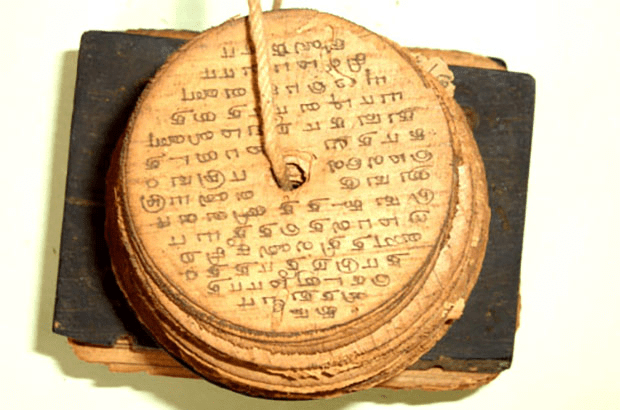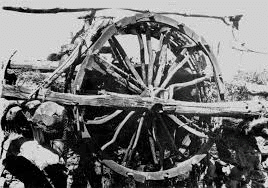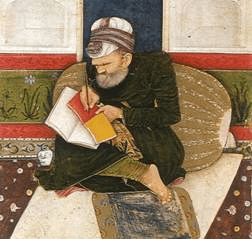Chapter 12 Symmetry NCERT Text Book Solutions
April 1, 2025Chapter 2 Kings and Kingdoms Solutions
April 2, 2025NCERT Solutions: Tracing Changes Through a Thousand Years
Let’s Recall
Q1. Who was considered a “foreigner” in the past?
Ans: According to the medieval period, any stranger who did not belong to a certain society or culture and was not a part of that particular village was regarded as a foreigner. For example, a city-dweller, therefore, might have regarded a forest-dweller as a foreigner. But, if two people belong to the same village, they are not foreigners in spite of their different religious or caste backgrounds.
Q2. State whether true or false:
(a) We do not find inscriptions for the period after 700.
(b) The Marathas asserted their political importance during this period.
(c) Forest-dwellers were sometimes pushed out of their lands with the spread of agricultural settlements.
(d) Sultan Ghiyasuddin Balban controlled Assam, Manipur and Kashmir.
Ans: (a) False
(b) True
(c) True
(d) False
Q3. Fill in the blanks
(a) Archives are places where ______ are kept.
(b) ______was a fourteenth-century chronicler.
(c) ______, ______, ______, ______ and ______ were some of the new crops introduced into the subcontinent during this period.
Ans:
(a) Archives are places where manuscripts are kept.
 India’s Palm Leaves Manuscripts(b) Ziyauddin Barani was a fourteenth-century chronicler.
India’s Palm Leaves Manuscripts(b) Ziyauddin Barani was a fourteenth-century chronicler.
(c) Potatoes, corn, chillies, tea, and coffee were some of the new crops introduced into the subcontinent during this period.
Q4. List some of the technological changes associated with this period.
Ans: The technological changes associated with this period are:
- The Persian wheel for irrigation.
- The spinning wheel in weaving.
- Firearms in combat.

The Persian Wheel
Q5. What were some of the major religious developments during this period?
Ans: The major religious developments during this period:
- Hinduism saw significant changes, including the worship of new deities.
- Royalty began the construction of temples.
- The role of Brahmanas (priests) grew, making them dominant in society.
- The concept of bhakti emerged, focusing on a loving, personal deity.
- New religions, such as Islam, appeared in the subcontinent, introducing the teachings of the holy Quran.
- Many rulers supported Islam and the ulama (learned theologians).
Let’s Understand
Q6. In what ways has the meaning of the term “Hindustan” changed over the centuries?
Ans: The meaning of the term Hindustan has evolved significantly over the centuries:
- In the 13th century, historian Minhaj-i-Siraj used Hindustan politically to refer to lands under the Delhi Sultanate, specifically areas in Punjab, Haryana, and the region between the Ganga and Yamuna.
- At that time, Hindustan did not include South India.
- In the 14th century, poet Amir Khusrau referred to the culture and people of the Indus River as Hind.
- By the early 16th century, Babur described the geography, fauna, and culture of the subcontinent using Hindustan.
- Initially, the term lacked the political and national implications it holds today, but it now commonly refers to modern India.
Q7. How were the affairs of jatis regulated?
Ans: During this period, social and economic differences led to the formation of jatis, or sub-castes, where individuals were ranked based on their occupations and backgrounds. The affairs of these jatis were managed by:
- An assembly of elders, known as the jati panchayat, in some regions.
- Rules set by their respective villages, governed by a local chieftain.
Jatis created their own regulations to oversee the behaviour of their members, ensuring adherence to both their internal rules and the village laws.
Q8. What does the term pan-regional empire mean?
Ans: The term pan-regional empire means the empires that spanned diverse regions, which were expanded to a larger area or regions like dynasties of Cholas, Khaljis, Tughluqs, and Mughals. While these empires were influential, not all were equally stable or successful.
Let’s Discuss
Q9. What are the difficulties historians face in using manuscripts?
Ans: Historians face several difficulties when using manuscripts:
- Before the invention of the printing press, scribes copied manuscripts by hand, making them often hard to read.
- During the copying process, scribes made small changes to words and sentences, which accumulated over centuries.
- Original manuscripts are rarely available today, so historians rely on later copies made by scribes.
- Historians must compare different versions of the same text to deduce what the original author wrote.

A painting of a scribe making a copy of a manuscript.
Q10. How do historians divide the past into periods? Do they face any problems in doing so?
Ans: Historians divide the past into periods based on various economic and social factors. This helps to characterise significant changes throughout history:
- Historians encounter challenges because time reflects changes in social and economic organisation, as well as the evolution of ideas and beliefs.
- Describing an entire period as a single historical unit can be problematic.
- The term “modernity” implies material progress and intellectual growth, which can overshadow earlier developments.
- Dividing history into large segments with shared characteristics simplifies the study of time.
Let’s do
Q11. Compare either Map 1 or Map 2 with the present-day map of the subcontinent, listing as many similarities and differences as you can find.
Ans: Map 2 was made by a French cartographer. Map 1 was made by the Arab geographer Al-Idrisi. Map 1 was made in 1154 C.E., whereas Map 2 was made in the 1720s. The first modern maps of India were produced by Survey of India.
In Map 1, places are marked in Arabic, whereas in present-day maps, the places in the subcontinent are marked in English. In Map 1, South India is located where North India is located on the present-day map.
In Map 2, the coastal areas are well-detailed, whereas in Map 1, the coastal areas are not marked in detail like in Map 1. Some of the well-known names are spelt differently in Map 1. Map 2 was used by merchants and European sailors on their voyages.
Q12. Find out where records are kept in your village or city. Who writes these records? Is there an archive? Who manages it? What kinds of documents are stored there? Who are the people who use it?
Ans: In our village, records are maintained at the Panchayat office. The records are written by the Gram Sevak, a government employee. Currently, there is no dedicated archive in the village. The Sarpanch oversees the management of these records. The types of documents stored include:
- Land records
- Birth and death data
- Information on public properties
- Records from health centres
Villagers frequently use these records, as certificates are issued based on the information contained within them.

